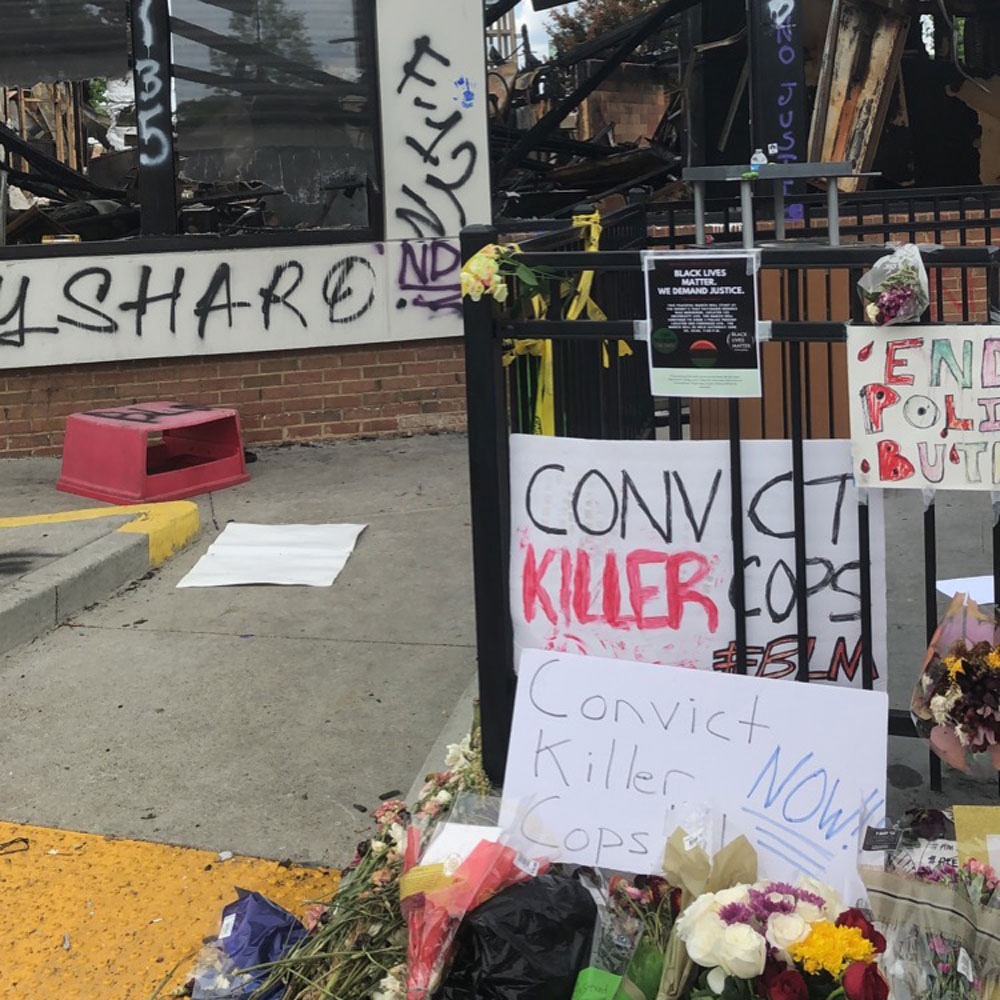
September 25, 2020; Next City
George Floyd’s murder in Minneapolis brought a long-smoldering demand to end the harmful impact of police and prisons to the top of the national agenda. Those whose lives have been most heavily touched call for replacing police and prisons with approaches that build, rather than undermine community. But such efforts have often faced fierce resistance from police and politicians.
From Atlanta, Georgia, however, comes a promising effort to at least partially bridge this gap. Just weeks after Atlanta briefly took the national stage when city police shot Rayshard Brooks, a task force charged with reimagining the Atlanta City Detention Center issued its report and recommended closing the facility and replacing it with community-focused restorative services.
As important as the recommendations are, the task force’s membership make this a process to be highlighted. One member of the task force was Patrick Labat, chief of Atlanta’s Department of Corrections (and soon to be Fulton County sheriff). He was clear about what he brought into the room when he told Next City, “I am a firm believer that Atlanta, a city this size, needs a place for detention.” Working opposite Labat was Marilynn Winn, co-founder and executive director of Women on the Rise, a grassroots organization led by formerly incarcerated women of color, who told Next City, “Chief Labat and I did not see eye to eye, because I kept saying ‘I wanna close your jail’ and he kept saying ‘you’re not going to close my jail.’ He and I went back and forth a lot.”
Designing Justice + Designing Spaces was engaged to design and facilitate community engagement. According to Shelley Davis Roberts, a facilitator of the task force’s work, the gap was wide when the process began. “The campaign had been going on for six years, and organizers were already at odds with the police chief,” Davis Roberts says. “The community really didn’t believe the city had any intention of closing the jail.”
Another task force member, Xochitl Bervera, director of the Racial Justice Action Center, recognized how essential it was to bring these diverse views into a common effort: “If you don’t have the head of the Department of Corrections and police alongside the homeless person who has just been arrested, or the trans woman who has cycled in and out of that jail, you’re not gonna get to where you need to go.”
Working together in an environment structured to get to common understanding had an impact. As Bervera described it, “For abolitionists and people on the ground who have been fighting, we’ve all been focused for a long time on what is wrong with the system. Sometimes our visioning muscles are a bit weaker. It was awesome to dream—even to dream inside the realities of money—and envision something different than what Atlanta has ever seen.”
The importance of having all stakeholders at the table is illustrated by failure of this effort to include detention center workers. As Che Johnson-Long, another facilitator, explained, “The workers inside the jail did not receive good communication about how the jail was closing, These employees are mostly Black and mostly live in South Atlanta, and we wanted to make sure they also got a say in how the building got redesigned. Unfortunately, we didn’t get to do that, and it caused a lot of tension…. there should have been better frameworks to engage their concerns, like loss of jobs and pensions, and ways to envision new job paths within the Center for Equity.”
Sign up for our free newsletters
Subscribe to NPQ's newsletters to have our top stories delivered directly to your inbox.
By signing up, you agree to our privacy policy and terms of use, and to receive messages from NPQ and our partners.
Labat captured the shift the process was able to achieve:
I’m law enforcement through and through. Still, the community broke through on understanding how we were going to communicate, that’s the biggest take away from me. We have a new responsibility, given all the civil unrest and the conversations communities want to have. We have an obligation as law enforcement not just to sit at the table, but to have meaningful conversations about putting our community first.
Starting as antagonists, the task force brought forth a set of recommendations that will change the emphasis from responding to the fear of crime to rebuilding communities and strengthening the quality of each citizen’s life. As described by the local Atlanta InTown newspaper, the former jail would be transformed into a Center for Equity, “a multi-service center that would create housing opportunities in a range of forms—affordable housing, supportive housing, sobering beds, shelter beds, safe-haven beds, or crisis-intervention beds for people experiencing a behavioral health episode that does not require hospitalization. The space would also house compatible, revenue-generating activities that are consistent with the mission and values of the space.”
Also emerging from the process were recommendations for decriminalization, which captured the focus of those who came into the room with the goal of abolition. According to Bervera, in comments reported by the Atlanta Journal-Constitution, “The overarching recommendation was to decriminalize the city code…to put an end to the of the kind of policing that led to Rayshard Brooks’ killing.”
One final and critical test remains. Making aggressive recommendations for change in an entrenched system is impressive, but until they are enacted, they remain just recommendations. The lack of quick follow-through by Atlanta’s mayor is worrisome, and speaking as a grassroots advocate, Bervera is concerned:
The task force has been dissolved, the planning team has been dissolved, the mayor’s office is not forthcoming. It’s clear that they have eliminated any real community power in this phase. Community and government partnerships mean shared power—you need structures and systems, not just collecting input from the community and creating a glossy report.
Atlanta’s effort is noteworthy. But if enacting radical change proves too risky to those in power, Atlanta may instead remind us of the limits of such consensus-building efforts. That would be a shame, and would not bode well for the vital community-building work ahead.—Martin Levine











